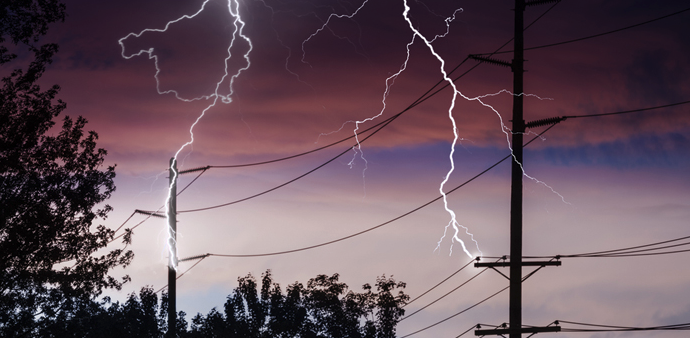How Surge Protectors Work

Most households contain at least one surge protector. In fact, there’s a chance you have one without quite realizing it. That’s because the immediately obvious use for a surge protector is that you can plug multiple components into one power outlet. Most frequently, this type of surge protector is found near home computer systems or home theater systems, where your monitors/tv screens, speakers, receivers and computers are all plugged in. But the most important function of a surge protector is that is keeps your electronics safe from power surges. Naturally, the first question to ask is “what is a power surge”?
What is a Surge?
In simple terms, a power surge is an excess of voltage. Surges are caused when the flow of electricity is interrupted and then started again, or when something sends too much electricity into the system.
In North America, most outlets are equipped to produce 120 volts of power. When a power surge occurs, the change in volts can cause major damage to your electronics. Surges can either wear out the components over time, or, in a large enough surge, can immediately damage them. Think of this like a water hose. Too much pressure on the hose causes it to burst. While the electrical wires won’t actually “burst,” they heat up like the filaments in a lightbulb and burn. As cables degrade, they are able to handle less and less power in the future. It’s a problem that can snowball over time. In the case of TVs and computers, this kind of damage can be costly.
What are the Types?
There are a few different kinds of surge protectors, but each does essentially the same thing. Surge protectors divert or suppress extra voltage away from the components that send electricity to your electronics. Most do this using a parallel circuit design. Extra voltage is diverted away from the normal circuit and onto a seperate one. Surge suppressors operate slightly differently, in that they store the extra voltage and release it slowly. This is called a series circuit. The most common, however, is the parallel circuit design. In the case of household items, the components of the circuit are the wires in your outlet that run to the top two prongs. The bottom prong, called the ground, creates the parallel circuit. It is where extra voltage is diverted to in the case of a surge.
Basic Household Models
There are three main wires inside a basic surge protector. The neutral and hot wires (which create the voltage), and the ground wire. When a surge occurs, the surge protector passes the extra voltage to the ground wire, creating a parallel circuit. But how does the voltage travel from the hot wire to the ground wire? In most cases, surge protectors contain components called metal oxide varistors (MOVS). The MOVs connect the hot wire (which carries the current) and the ground wire. Since they are good conductors, they can carry electric currents from one component to another.
MOVs are composed of 1 piece of metal oxide and two semiconductors. The semiconductors join the metal oxide to the power and grounding line. The MOVs work by producing a variable resistance that changes depending on voltage. When the voltage is at the right level, the MOVs do nothing, and electricity passes through the circuit as usual. When the voltage is too low, the flow of electrons in the semiconductor creates a high resistance to increase the voltage. If the voltage gets too high, the flow of electrons changes to create low resistance and lower the voltage. In the case of a surge, MOVs create a lot of current in order to redirect the excess voltage. This way, your electronics are not exposed to the extra voltage.
Whole Home Surge Protectors
Although they are very similar in nature to the basic household models, the whole-home options are a little more complex. If you want to know more about them, check out our guide to the best whole-home surge protectors on the market.
Why do I need to know this?
if you have your household devices properly protected, you don’t need to know a ton about how they work and what they do. But not all surge protectors act the same, and not all of them protect you from every single source of surges. If you understand why they are used, you’ll be able to find the products that protect you and control the future of your electronics.
